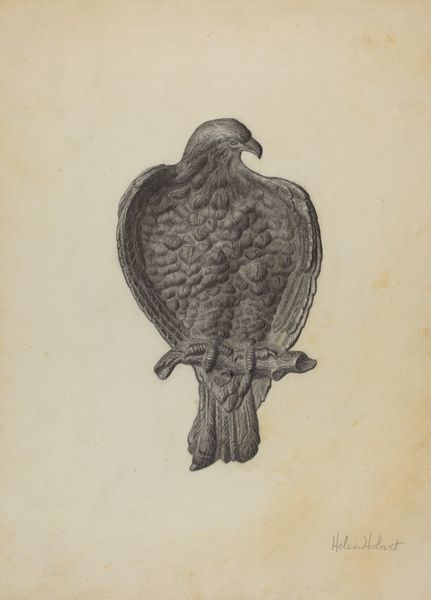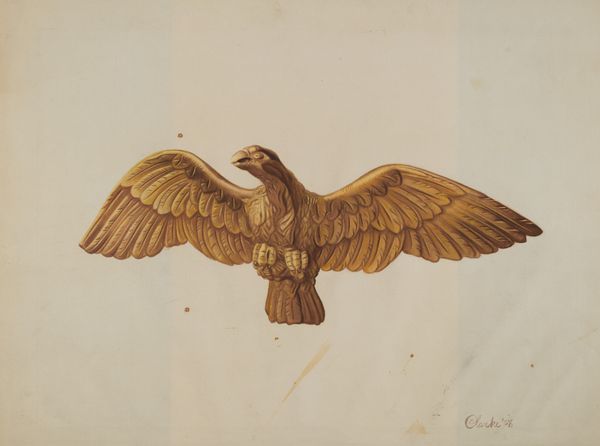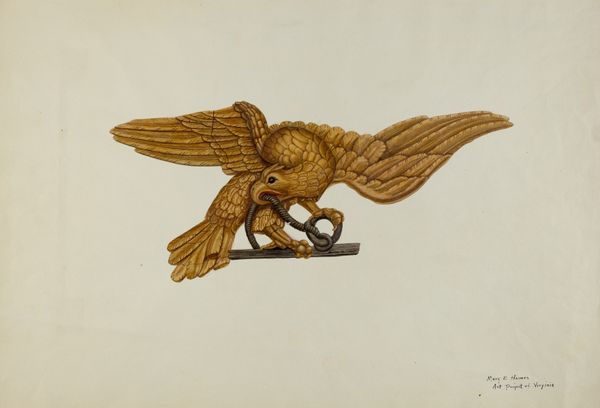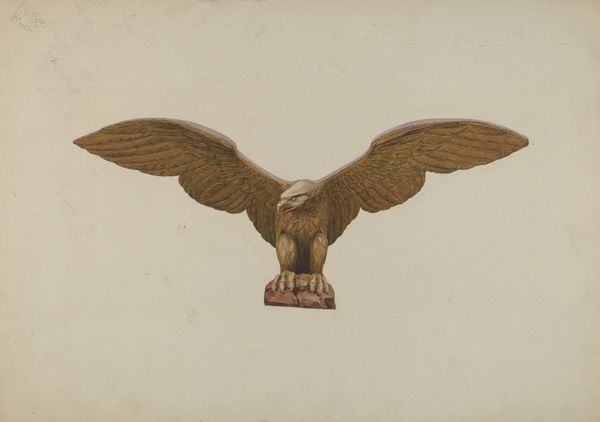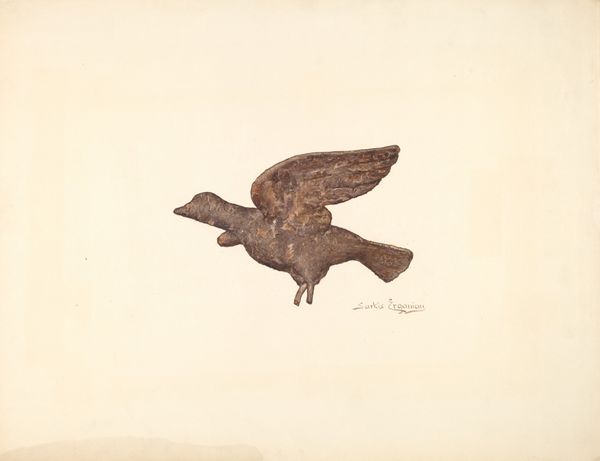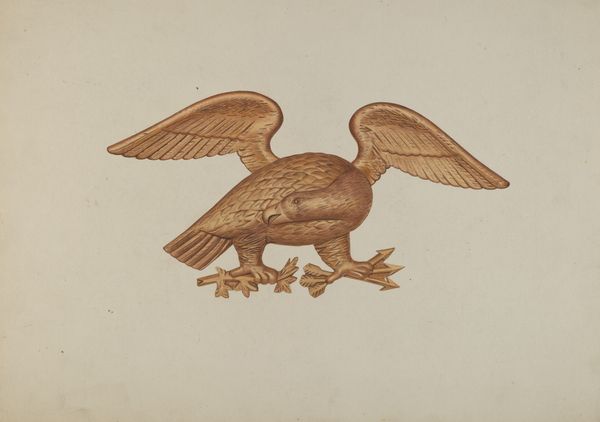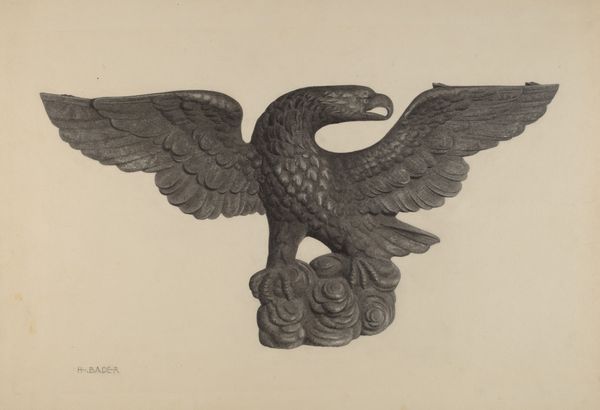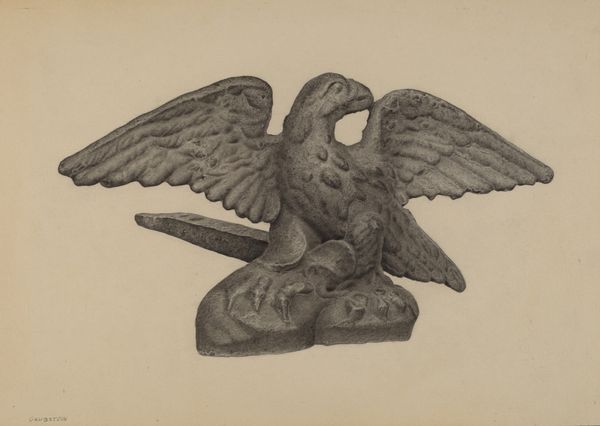
drawing, sculpture, pencil
#
drawing
#
pencil drawing
#
geometric
#
sculpture
#
pencil
#
realism
Dimensions: overall: 21.9 x 28.8 cm (8 5/8 x 11 5/16 in.) Original IAD Object: 22" high; 36" wide
Copyright: National Gallery of Art: CC0 1.0
Editor: Here we have Helen Hobart's "Weather Vane Finial," created around 1937, a meticulously rendered pencil drawing. The starkness of the medium really emphasizes the sharp, almost severe, lines of the eagle. What do you see when you look at this piece? Curator: Well, I'm immediately drawn to the eagle as a symbol. In 1937, amidst the growing global tensions leading up to World War II, the eagle carried significant weight. Beyond its general association with freedom and power, were there any specific local or national events that might have influenced Hobart’s choice of subject and its particular rendering? Think about the socio-political climate. Editor: I hadn't considered that. I was more focused on the object itself, its sort of quiet monumentality despite being a drawing. Curator: Exactly. And the 'monumentality' connects to the public role of art. Weather vanes are public art, literally on top of buildings for everyone to see. How does that context—the accessibility and the function—affect the image itself, do you think? Does knowing it would become a mass produced weather vane shift your perception of the pencil drawing? Editor: That's a great point. I guess I'm starting to see how this artwork intersects with broader social narratives, moving beyond just personal expression to engaging with collective ideas about national identity and societal values through mass culture. The design had to have immediate symbolic value. Curator: Precisely. The finial's design also suggests an idealization, maybe even propaganda. But it could also represent resilience in hard times, like those experienced during the depression, depending on how people chose to understand it. How does an image intended to adorn everyday spaces subtly reinforce certain power structures? Editor: So, the pencil drawing isn't just a study for a weather vane; it's also a lens through which we can examine cultural values and power dynamics of that era? I’m now starting to think about all those similar images in public places… Curator: Precisely! Now you're looking at art history.
Comments
No comments
Be the first to comment and join the conversation on the ultimate creative platform.

